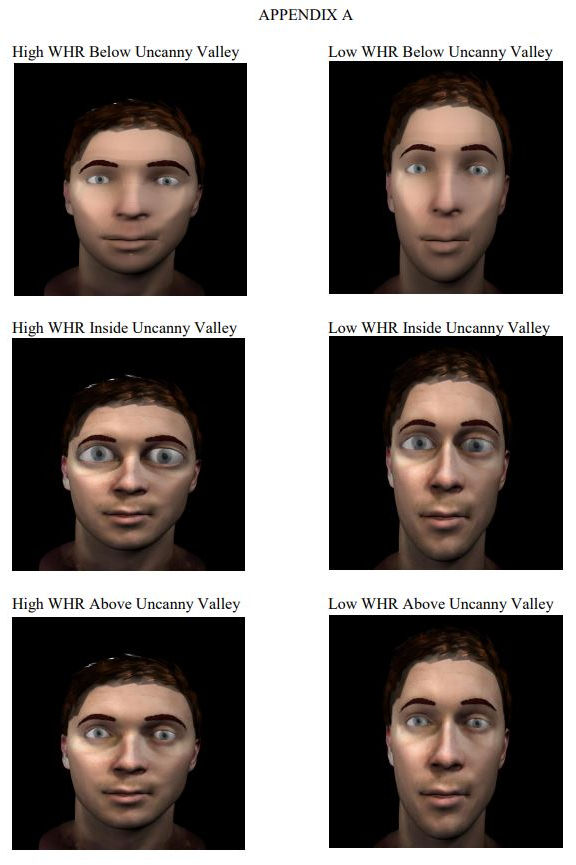
Uncanny Perception:
Research on viewer perception of characters
For my Master's Thesis, I ran a study that investigated how viewers react to CG faces in an animated narrative. The focus of the study was based around the initial question of how players' or viewers' perceptions of a 3D animated character might differ if certain features of the face were varied. After investigation and review of literature, hypotheses were formed around viewer reactions to faces that varied on the dimensions of width/height morphologies and realism (in regards to the Uncanny Valley). Further breakdown of the specific hypotheses can be found in my thesis for which there is a link below.
A pre-visualization quality animation was developed and used in the research study. The narrative in the animation was purposefully designed to be ambiguous and not lead the viewer to any obvious conclusions about the nature of the location or events that might have occurred either before or after the animation. The character was developed to be similarly ambiguous. The only difference between conditions was that the face of the singular character was changed along the width/height and realism dimensions. Here is an example of the different faces that would have been seen in the different videos.

Along with producing the animations, I ran normalization studies where settings and characters were shown to participants along with surveys to determine how appropriate they were. Normalization surveys consisted of both affective Likert rating scores and essay questions that were individually analyzed using coding methods. The normalization surveys were also analyzed to determine the appropriateness of the affective scales that were used in the main portion of the study.
The main portion of the study was conducted online with a similar process where participants were shown a random video out of the six conditions and then were presented with a randomly ordered set of affective scales to document participants' reactions. All surveys were developed by me with some instruction from an advisor. I collated and analyzed all the compiled data, also with some guidance from an advisor.
Here is an example video of one condition (the Low Width and High Realism condition) that would have been seen by participants of the study.
The main conclusion that could be drawn from the study was that men and women perceived the character slightly differently. Different morphologies may be perceived differently between men and women. Specifically thinner more realistic faces and wider less realistic faces are more likely to be perceived as more amiable. Thus designers creating characters with a specific audience in mind may want to take special care when creating the faces of their male characters with special consideration of their viewing audience in mind. However, there are several limitations to the study so too strong of conclusions can not be drawn and further study should be done to determine the veracity of these results.
A link to the paper can found just below for further details and for an extensive break down of results and conclusions.



